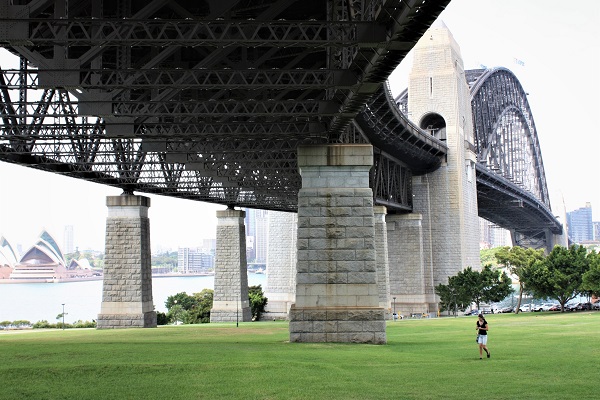We need green spaces after COVID-19

UNSW associate professor Paul Osmond says buildings and cities need to change after the COVID-19 pandemic and is urging people to soak up nature on balconies, gardens and exercise in parks.
“We need nature, at a minimum for viewing, but ideally through immersion and interaction,” he says.
“Particularly now, as a way of de-stressing and preserving mental health.”
He references the nature-deficit disorder that US writer Richard Louv coined in 2005 in his book Last Child in the Woods: Saving Our Children from Nature-Deficit Disorder. The term helped him and others speak about the negative effects on human health when removed from nature.
The UNSW associate professor says people should not reinterpret the ‘stay at home’ message to mean they have to ‘stay inside’ here in Australia, unless they are under quarantine.
“It’s perfectly okay to go outside, as long as you’re maintaining the 1.5m of social distancing,” he says.
He goes on to say that being sealed up in a house or apartment all day can lead to ill-health due to the air quality, which is often poorer than the outdoors.
“So it just makes sense to head outdoors or open windows during these tighter restrictions, especially now while there is less pollution from industries and transport. Even if it is just by walking down the street rather than in the park, at least you are seeing some green bits of biodiversity which helps with your overall mental health and wellbeing,” he says.
But for those who do have to remain inside, he highly recommends pot plants for their ability to filter the air.
“The question is, how do we draw lessons from this pandemic to design houses, office buildings and cities in a way which makes us more resilient to future pandemics, while also being more people-friendly?” he asks.
As a historical example, we can look to the modernist architecture movement that grew from the lessons of the Spanish flu and earlier pandemics, such as cholera.
“The idea was cleanliness and a streamlined form, by getting rid of curlicues and ornamentation which would collect dust. And to bring more sunlight into houses to kill bacteria,” Paul explains.
Emerging from this pandemic, there is likely to be more emphasis on ‘living architecture’, such as green roofs and walls, and a step away from the reliance on air conditioning and heating in Australia.
He mentions that in Australia we should make use of our climate, which for about two thirds of the year is neither too hot nor too cold, and move towards better building design.
This building design will be about minimising energy use, acknowledging climate change and about how we can live a lot healthier and happier in the future, he says.
The full report by Paul can be found on the UNSW website.
